 Upon moving into a rental home some years ago, my young sons found themselves the gleeful lords of a 6-foot wide, dense thicket of shrubs and evergreens all around the boundary of the backyard. Not only did the thicket screen the neighbors' view of the backyard, it also offered a small, secret woodlot, perfect for building forts, and playacting Indian and superhero fantasies. As season followed season, the gardener learned to love this thicket too, for the juncos, cardinals, finches, jays, squirrels, rabbits and groundhogs it attracted, fed and sheltered, and for its green, blooming beauty.
Upon moving into a rental home some years ago, my young sons found themselves the gleeful lords of a 6-foot wide, dense thicket of shrubs and evergreens all around the boundary of the backyard. Not only did the thicket screen the neighbors' view of the backyard, it also offered a small, secret woodlot, perfect for building forts, and playacting Indian and superhero fantasies. As season followed season, the gardener learned to love this thicket too, for the juncos, cardinals, finches, jays, squirrels, rabbits and groundhogs it attracted, fed and sheltered, and for its green, blooming beauty.Most of the thicket was made up of Japanese honeysuckle shrubs, maybe 20 to 30 years of age and 10 feet in height, with nectar-sweet flowers in spring, scarlet berries through late summer, fall and winter. The benefits of encouraging wildlife (human boy and animal), and proffering structure, privacy and lush color to the yard taught the gardener to highly value hedges.
In the present garden, therefore, I was determined to create hedges which would bring these same rewards. As development proceeds apace across our land and formerly wild spaces, it is especially important to generate new hedges to replicate disappearing wildlife habitat. Of the vast array of shrubs available to gardeners, how to choose which ones to foster? My choices were founded on just a few basic principles: the shrubs would feature alluring appearance, in leaves and fruits; they would be quick growers, since a tall, screening effect was needed on my very bare and exposed lot; they should be native and suited to northwest Michigan so as not to face an untimely demise; and they should produce food and cover that would warm the hearts of birds and convince them to take up residence. And okay, there was also a nostalgia factor in opting for the lilacs and forsythias that had featured in gardens of grandmothers and great aunts during childhood.
Although I'm really taken with the characteristics and hardiness of Japanese honeysuckles, master gardeners advise that this is an invasive shrub in Michigan, overwhelming the native shrubs as it proliferates, so that option was sadly passed over. A black beauty elderberry shrub, planted at the front of the yard, went into a decline over its second and third years, and in the fourth year generated only a sparse handful of leaves. Despite its handsome burgundy leaves and the berries it is supposed to (but never did) bear, elderberry doesn't like the quick-draining, sandy soil and all day sunshine in this garden.
Viburnum shasta and onondagas, with assiduous (more than anticipated) watering, have leafed out very fully, but don't gain much height at all, and remain disappointingly low-reaching, two-foot high shrubs. All the shrubs chosen were advertised as capable of reaching heights of at least six feet, so even though the virburnums do sport captivating dark green leaves that shade into reddish gold in autumn, their lack of volume puts them into the category that would not be chosen again. This is also the case of the wine and roses weigela, also only about two feet tall after five years of cossetting, and the blue girl and boy holly bush, another slow grower which has yet to generate a single berry.
The successes on the road to a perimeter hedge start with the American high bush cranberry. This shrub is a rapid grower, and the two in my garden have shot up from one foot in height to five feet, with equally healthy, spreading circumference. They turn the most brilliant red in autumn, brighter even than the well-known burning bush, and also offer the boon of clusters of red berries (photo from flickr.com at start of this entry). Lilacs also do well here, speeding upward and outward. There are four purple-flowering bushes, two white. If the lilac blooms are picked when spent, the bushes reward the gardener with many more blooms the following spring. One of the white lilacs has not yet flowered in five years, the suspicion is that this is due to having been planted between my house and my neighbor's along the plotline where the sun only reaches for a few hours a day. Last spring I moved this lilac to the backyard, full-sun plotline, and trimmed about a third of the branches back close to the ground, which is said to encourage rejuvenation, so we will see if next spring it breaks free of the flower drought.
Normally the only fertilizing agent applied to the shrubs is a heap of composted cow manure each fall. The two forsythias, however, while covering themselves in felicitous egg-yellow flowers each spring, had not shown the enthusiastic growth forsythias usually revel in. This spring the gardener followed the advice of a village lady with a gangbuster of a garden, and fed them a helping of slow-release Osmocote pellet fertilizer. They responded by adding a foot of height by the fall. The plan is to similarly feed all the garden shrubs next spring, having come round to the village lady's viewpoint that nature, for all her wisdom and nurturance, does not in fact provide all the food that growing plants need without a little help from her friends.
A snowmound spirea under the front windows has grown about four feet upward as well as in width in five years, and is a perfect sphere of frothy white flowers in spring. A younger blue mist spirea also comes on zestfully, and brings a unique turquoise blue flower to the yard in mid-to-late summer, when most shrubs are past their bloom. The final entries begun five years ago, two viburnum Chicago lustres, a dark red Diablo ninebark, a gold flame honeysuckle, and a northern bayberry, have displayed slightly more sedate but still strong growth. The Chicago lustres bear a purple-black berry, but the bayberry has yet to fruit, despite promises at the garden center that it had cross-pollinating male and female roots.
There was a purple-flower butterfly bush for several years, but last summer this was removed and replaced with a fledgling upright cottoneaster. Butterfly bush flowers are undeniably pretty, do have an engaging sweet-grape scent, and do indeed attract butterflies. Their somewhat surly and unsightly characteristics outweigh these pluses, to my thinking. The flowers turn from their dark purple tones to faded brown within just a couple days of opening. The limbs of the shrub have to be cut back by two-thirds each spring, and these limbs grow thick, very tough, and several feet in length in just one summer, making it a real job of work to prune them every year. The trunks and branches are a dull grey color, depressing rather than enhancing the winter landscape. And the shrub begins to green up very late, toward the end of June, so all through the color unfolding of springtime it just sits like a big dead lump in the garden. With hollyhocks, columbine, yarrow, lavender and lots of other butterfly and hummingbird seducers, the butterfly bush just wasn't worth its drawbacks.
The last shrub planted, this past spring, is a fall-flowering witchhazel. Right now it's about two feet high and numbers maybe half a dozen branches. The pictures of its cascading, spiky gold flowers and the fact that it will bring one more autumn bloom to the garden were the determinants in its selection. This shrub is said to be capable of a 20-foot height, if it attains even half that dimension, the gardener will be more than pleased. With the assistance of the shrubs, most of which now reach to my shoulders, one day the garden will boast a true and robust, tall and fruitful wildlife hedge.
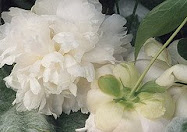
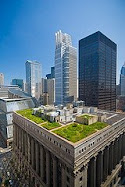

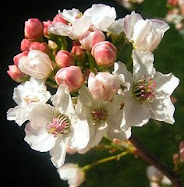
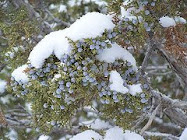

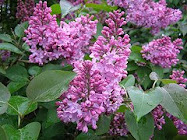
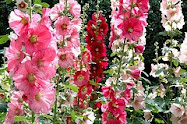
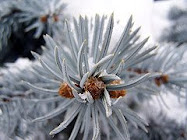
No comments:
Post a Comment